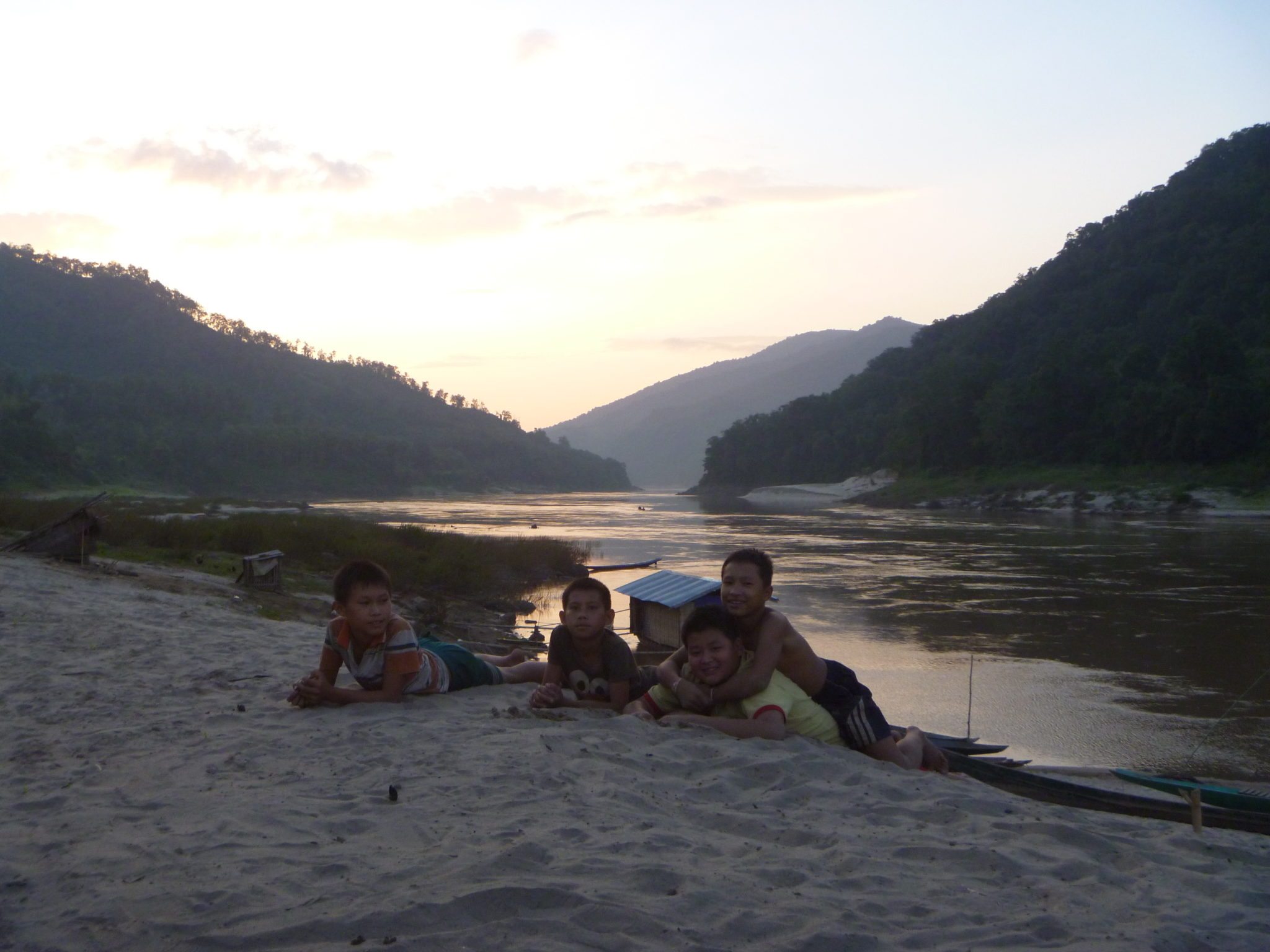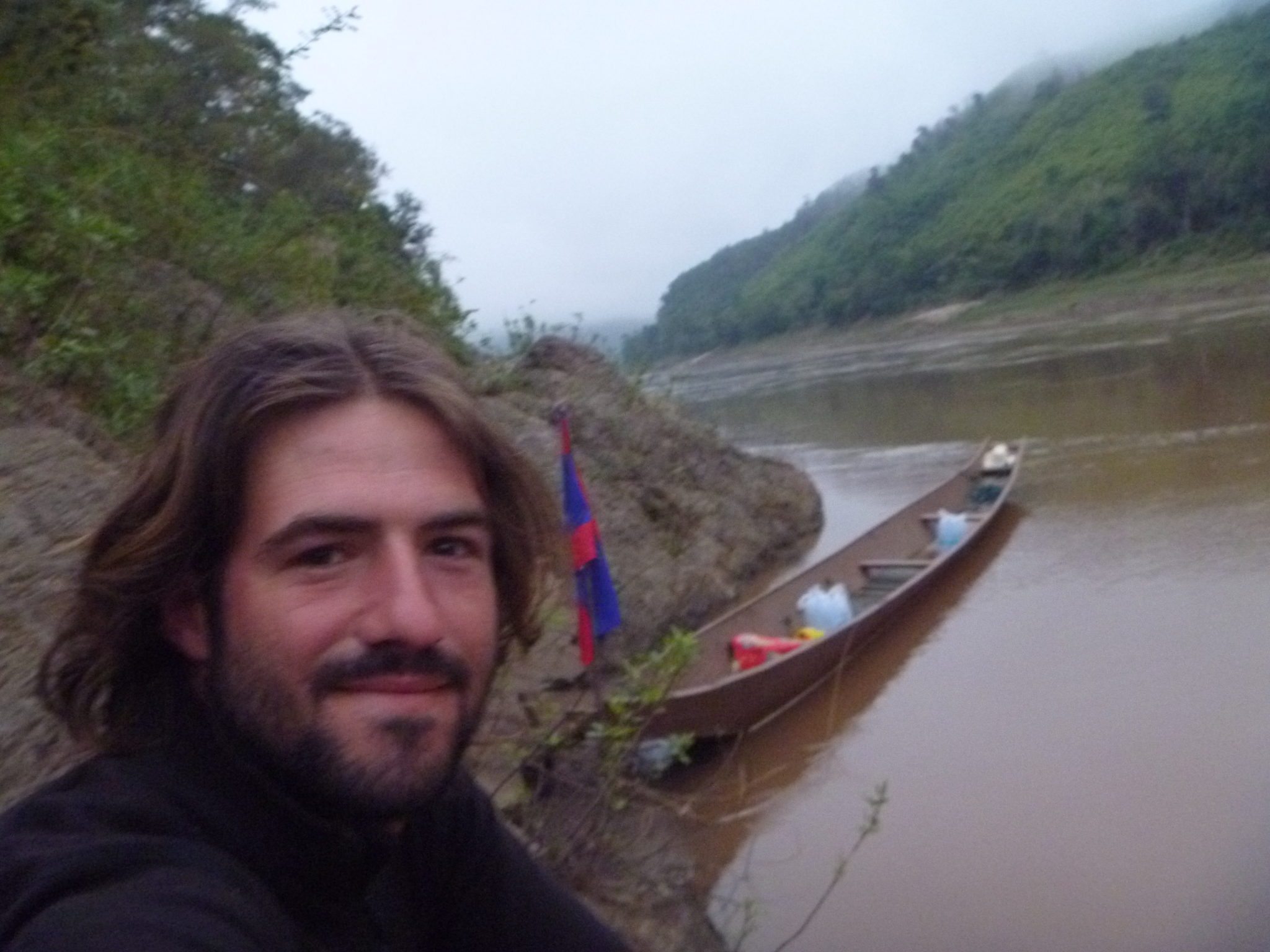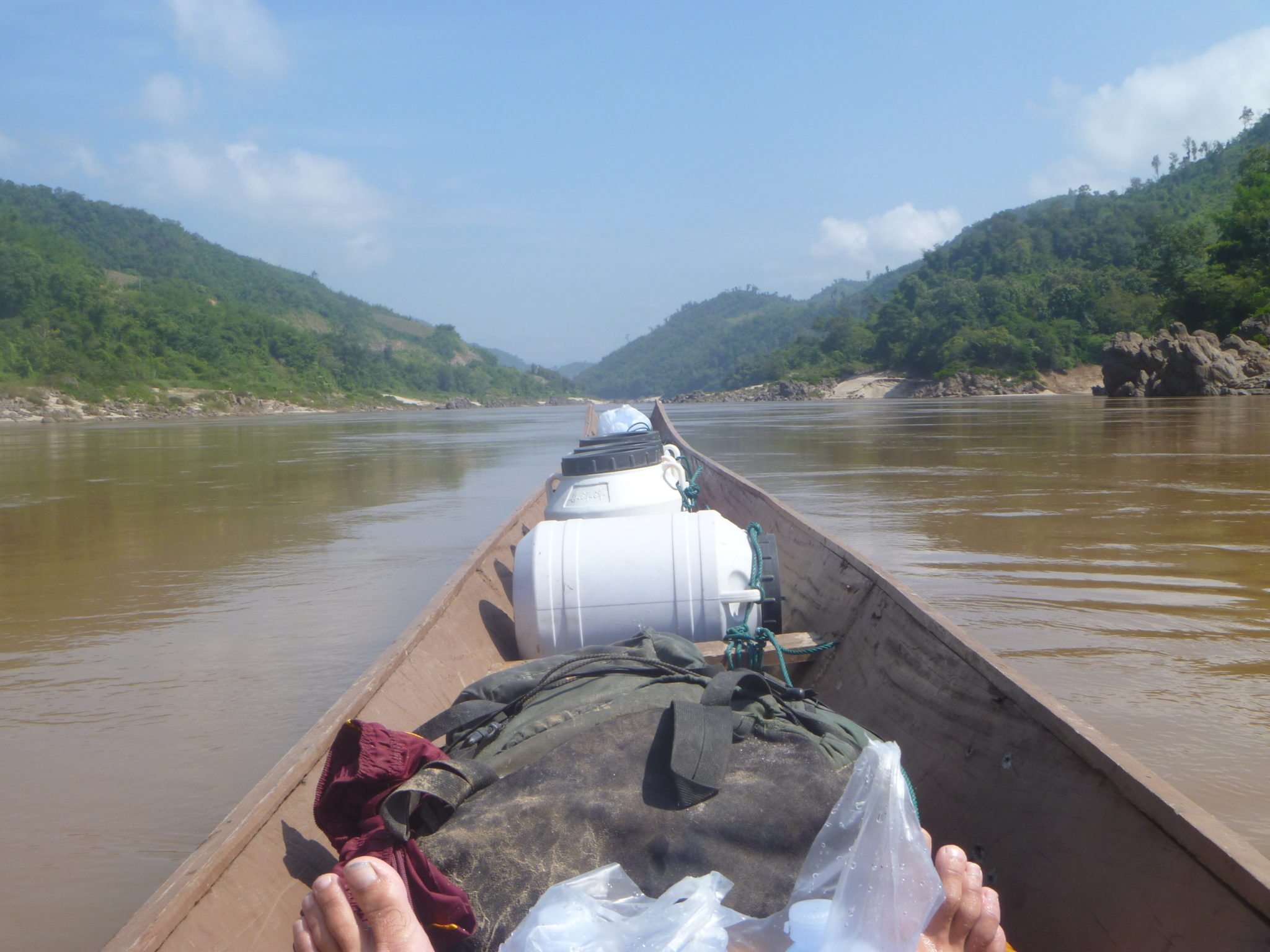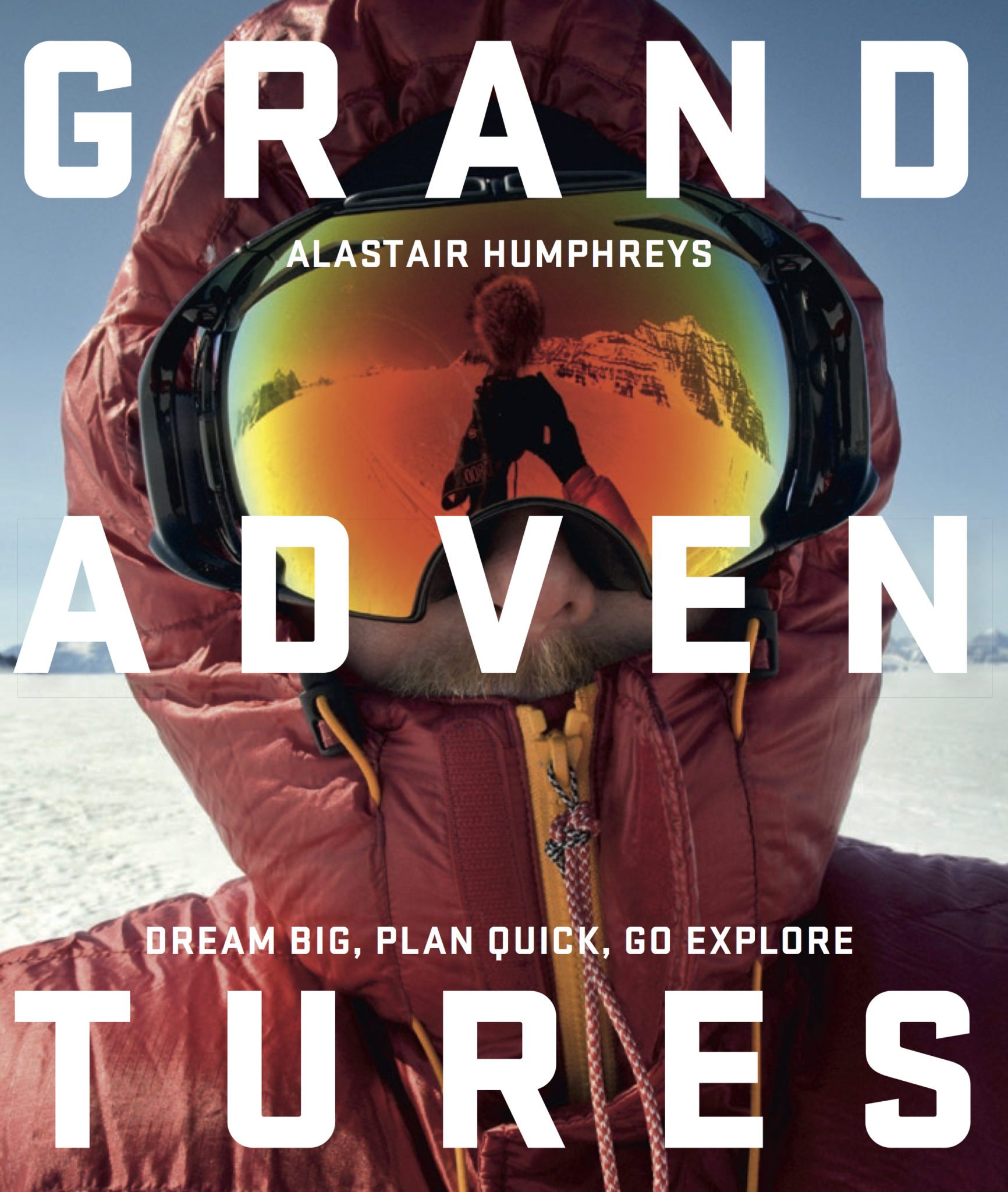I asked former management consultant Olly Whittle to share his great tale as part of the Grand Adventures project. I liked his devil-may-care attitude to canoeing down the Mekong river. Here’s what he wrote back to me…
I love your aim of getting people to overcome their obstacles and go after their dreams. I have found that completing an original adventure has given me a reserve of confidence to borrow from when I need it and it made me feel really truly alive in the moment.
I felt like most of my adventures to date had been pre-planned and organised expeditions and I needed to do something that I had created myself, the kind where I would set off completely oblivious to what lay ahead, and with no-one to report to, no targets or objectives to complete.
I tried to build a raft and paddle a river in China but was thwarted by the police, so I headed south to Laos where I thought the rules might be a little more relaxed.
I found the Mekong and thought “this is the River”, but it was too fast for a hand-built raft. I decided to try and buy a local wooden canoe instead and use that. It took a while to find someone I could convince to sell me a canoe. Anybody that spoke English told me to get a ticket on a tourist boat. “Why you don’t need a canoe – you can get on the tourist boat”. Yeah but that’s not the point, is it?
I did find it hard for them to get the point, and I did feel a little over-privileged at that point – because it seems like you have to have a certain level of comfort in your life before you actively seek hardship, danger and well, adventure!
Anyway, I found a fisherman and, using a translation I had previously had written for me on my notepad, he knew I needed to actually buy my own canoe. I started at $80, he said $200 and we settled on $155 with a free wooden paddle. I threw a few beers in as a persuader too and he helped me fix it up (it was the runt of his fleet). This still remains the best hundred quid I ever spent!
The only other kit I needed was some barrels for my stuff and a rope to tie them to the canoe – I got these for about another $20 and then bought some food – rice and tinned fish. So the whole 7 day adventure cost me under 200 quid (I already had a tent and a stove).
I set out utterly bricking it. I had pretty much no canoeing experience, I hadn’t been able to find a life vest and I had no idea if my canoe was river worthy. It felt pretty unstable and it leaked more than I thought it should do but I had half an old plastic carton to bail it out with – which later also served as a urinal on the go. The feeling of saying “here goes nothing!”and just setting off is impossible to replicate back at home in our normal, sanitised, risk-free lifestyles.
I had imagined some sort of epic endurance adventure where I’d need to draw on mental strength for possible monotony of day after day on a dull river, but I soon found it would be a thrill a minute action. There were rapids and whirlpools, nowhere near whitewater, but it was a constant effort to keep the canoe facing forwards and out of the way of rocks. There were impossibly big cargo boats motoring along with typical indifference to safety – those pilots have serious skills and river knowledge.
I found quickly that the river was in charge not me, that I could try and decide my course but only if the river would let me. Everything was on the river’s terms. At one point I heard (and then saw) a huge standing wave in the distance – I thought “my only job in the next 20 minutes is to make sure I avoid that”. I plotted a course to the left, round the wide bend in the river, but as I got closer and closer I realised the currents wouldn’t let me go that side, so I changed plan and paddled hard right, hard, hard, hard, but I couldn’t go that way round it either, the river only gave me one option and I went straight through the middle. The adrenaline was incredible because it felt like capsizing would have been a disaster. But I made it through and just had a lot of scooping out to do. I didn’t capsize at all in the end and probably the fear of the unknown was far greater than the actuality.
Highlights of the trip included:
- Being put up and fed by various villagers.
- Being woken up in my tent by a soldier with a gun – who I greeted with a big smile and he turned out to be lovely.
- A 20 minute trek through the jungle at night, to retrieve my passport that I’d accidentally left with a kind bunch of fisherman I met.
- Being marooned on a rock for 20 minutes while I panicked and a bunch of locals laughed at me and shouted advice in Laotian from the banks (I briefly lost my composure here and quickly regretted it).
- Being a guest at a Buddhist festival with about 50 monks in full orange togas.
But the best bit was the sheer beauty of being alone on a powerful river with thick noisy jungle on each bank and feeling completely alive in the universe as a natural part of it. I felt like the planet was perfect and that there was nothing else I ever needed in life. THIS was it right NOW. I’ll never forget that feeling.
Why did I do it?
I suspected that actually the constraints we feel from conforming to our culture are more or less arbitrary and are as they are just because they always have been. I suspected I could break that mould if I wanted it enough.
What did I do before?
I was a management consultant in London, pretending I earned a lot, pretending I was important, pretending I was smarter than average. In reality I was none of those and I was surrounded by a lot of unhappy people.
How did I turn dream into reality?
I had a flexible brief. The only aim was to do an original adventure. I wasn’t wedded to any specific part of any specific plan. I only had to answer to myself, not to anybody else. (The opposite to consulting!)
Tips for others:
- Do what locals do. If it’s good enough for them it’s good enough for you. Eat basic food, sleep on the bare floor, wear their clothes and use their tools and techniques. Never think you know better than them. Be inspired by their endurance, their skill, their unwavering positivity, their ability to make do with things.
- Back of an envelope risk assessment. I plot four quadrants on two axes; 1. Likelihood of it happening (high/low) and 2. Severity of the outcome (high/low). I plot all potential risks on here and then any that are high in either axis I do something about to prevent it or minimise it.
- Frame every set back as an opportunity. Then you can deal with anything.
- Do it for yourself, not for anyone else. Don’t think about what you’re going to tell people when you get home, imagine you will never be able to tell anyone about it and make decisions like that.
I also did another cheap adventure when I crossed lake Baikal in Russia when it was frozen. This trip I bought all the equipment in China for about £800 (except the tent I already had). It took 7 days and I made the sledge myself with the help of a kind Russian I met. This trip took 7 days too and I had to deal with broken crampons but it was amazing to be a couple of days away from the nearest human on a frozen lake. The reason I did this one was because I was inspired by the Scott and Shackleton expeditions but I couldn’t afford to go to either Pole. But it was easy (ish) and fairly safe to cross the frozen lake (it’s only 60km across). So I feel like I got my extreme cold endurance adventure for less than a grand.
My videos are on YouTube and I have a blog too.

My new book, Grand Adventures, is out now.
It’s designed to help you dream big, plan quick, then go explore.
The book contains interviews and expertise from around 100 adventurers, plus masses of great photos to get you excited.I would be extremely grateful if you bought a copy here today!
I would also be really thankful if you could share this link on social media with all your friends – http://goo.gl/rIyPHA. It honestly would help me far more than you realise.
Thank you so much!
Grand Adventures from Alastair Humphreys on Vimeo.



“I did feel a little over-privileged at that point – because it seems like you have to have a certain level of comfort in your life before you actively seek hardship, danger and well, adventure!”
Interesting point, I was doing my usual Sunday morning gorge of adventure blogs and stuff and it suddenly dawned on me that an awful lot of these professional expeditionists and youtube adventurers were white, male, upper-middle class Brits. Still inspirational to me, and let’s face it, it’s probably always been so; Apsley Cherry-Garrard was hardly a street ruffian from some northern mill town, but it did make me wonder a little at the ‘anyone can do it’ everyday hero message.
There’s a reason we don’t see kids from some sink estate in South Shields paddling the length of the Danube on an old oil barrel – they don’t need to make life harder than it already is.
Your’s too is an interesting point, Lawsy, about adventurers being white, male, upper-middle class Brits. Like you, I’ve thought this too but still found them inspiring.
But it would be interesting to see people from deprived backgrounds doing this sort of stuff; it might even get them out of the council estate rut and push them in a better direction in life.
Al’s Adventure1000 and Microadventures would be a great remedy to the council estate hopelessness.
Fingers crossed indeed.
true indeed.
Hey Alastair, I too have seen a fair bit of the Mekong by various forms of transportation (mostly the tourist modes). I did however have to buy a locals canoe in ventieng as there was no other form of river transport heading south. This was in 2011 or 12. I have always fancied traveling the only part of the river I have yeti to do, China. Do you have any knowledge or experience on this section of the Mekong? (Have thought an inflatable maybe the best option due to the massive dams)
Afraid I have no idea! Sorry.
Interesting comments, thanks.
I really believe in the confidence and self belief that can be gained from adventuring. And I think this applies to all people regardless of privilege/background. Raleigh expeditions are good example of this.
I think #microadventure and #adventure1000 concepts are genius because they remove two big barriers to starting: cost and perceived complexity. This might really help a new breed of adventurer!
But the other big barrier – why do it in the first place? – that’s tricky because it’s not immediately obvious before you do it, and it might be different for everyone. Perhaps the best thing to do is keep sharing stories!
The Mekong or “The Mother of Water” is quite a significant stream of life in this corner of the world indeed! I had the pleasure to explore the region and also a few days on the Mekong from Thailand to Laos and a few days in the Mekong Delta. The surrounding landscapes are breathtaking and the it’s fascinating to see how the river forms such an important part of the local life.
Also really interesting to see the dialogue in the comments around the idea of how a certain “luxury” urges the desire to seek adventure and hardship. Thanks for this thought-provoking impulse Olly! I would certainly agree and it must be a certain longing for the unknown, paired with the fact it will be a temporary escape and you are not trading in the luxury for permanent hardship. I think “voluntary adventure” can help to ground us, sharpen awareness and make people appreciate both: the adventure itself, but also the things we usually may take for granted…
I just finished a solo 12Day row down a remote section of the Murray River in Australia in a 2 Person Inflatable Boat and then read this Mekong Canoeing Blog. Yes I relate to the “Buzz” of being “out there” No you don’t get wild pigs raiding your campsite at 2am and Black Snakes crossing the river and trying to jump into your boat when you are safely ensconced in your bed at home. It makes being alive feel like being very alive!
This was a great idea – unique & well written by Olly. Liked the little bit at the end about being Robinson Crusoe-ed on a little rock with the locals laughing…can picture them holding their bellies!
[…] am enormously flattered to see Al Humphreys has featured my Mekong adventure on his blog as part of the #adventure1000 movement. I responded to his call for unique adventure stories and am […]
[…] Olly Whittle (canoed down the Mekong) […]
Did you sell the canoe after the trip? Im thinking about the canoe trip in Laos as well
Hi Matus
I gave the canoe to a kind lady who put me up and fed me in a river village near Luang Prabang. I kept the paddle as a souvenir!
I thoroughly recommend doing something similar, the only thing i would do differently (for safety) is get a life vest!
Wow that´s nice :) In the end I had no money left for buying canoe, but next time. Laos was amazing. Thanks for reply
[…] OLLY WHITTLE (CANOED DOWN THE MEKONG) […]
Hi Oliver
This trip sounds like great fun! I’ve done a few temperate canoe adventures but none down in the tropics. Where did you set off from? Do you think it would have been better if you had set off from a different point? i.e. more rapids or less!
Thanks mate.
Ollie
Echoing Ollies comments above. I’m curious where you started from and if those barrels are readily available everywhere? I’m looking on going all the way from Laos to Phnom Penh. Cheers
[…] OLLY WHITTLE (CANOED DOWN THE MEKONG) […]
We are three guys who want to do nearly the same but with a fishermensboat with a motor. The question is how do you handled the border legalities of laos, thailand and cambodia and what do we have to organise in advance.
:)
excellent – I so nearly did exactly this in 1999 when we were on honeymoon. We had travelled up to the chinese boarder by local boat and I had an idea to buy a canoe and paddle back down. I essentially flaked out and it has always been a massive regret. But it’s gonna happen. maybe not a canoe as it seems a few people have done that now but I will do it. Can’t wait.